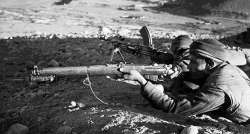India faced threat of Chinese attack through Myanmar, Nepal post 1962 war: CIA documents
Months after the 30-day long India-China border war of 1962 (also known as the Sino-Indian Border Conflict), the American intelligences were worried that the Chinese troops could attack India through Tibet, Myanmar and even Nepal and Bhutan.

Months after the 30-day long India-China border war of 1962 (also known as the Sino-Indian Border Conflict), the American intelligences were worried that the Chinese troops could attack India through Tibet, Myanmar and even Nepal and Bhutan.
In October 1962, Chinese troops advanced into Ladakh and the North East Frontier Agency (NEFA, now the state of Arunachal Pradesh). A month later, on November 21, China announced ceasefire and withdrew its troops.
Hindustan Times, in its report, cited declassified documents of Central Intelligence Agency (CIA) saying that by January 1963, wary US intelligence officials began studying the possibility of China “giving the Indians another black eye”.
The CIA, Defence Intelligence Agency (DIA) and US Intelligence Board conducted several assessments over a period of months, including possible attacks through neighbouring countries. They estimated the Chinese could mobilise a little more than 12,000 troops for such attacks and also assessed the air threat to India.
A DIA document, titled “The Chinese Communist ground threat to India”, claimed that China had the capability to carry out attacks in Ladakh, through border passes between Ladakh and Nepal, across eastern Bhutan and NEFA into Assam.
According to the document, the objective of such attacks would be extending Chinese control to the town of Leh.
According to the report, both CIA and DIA concluded that Chinese advances would be impeded by Beijing’s lack of logistics capabilities and the weather.
A May 1963 top secret memorandum from the CIA and USIB concluded that “the government of Burma (now Myanmar) would not resist the movement of Chinese troops” for a possible attack on India and would even “acquiesce” in the use of Burmese transportation facilities and airfields.
Both the CIA and DIA believed a possible Chinese attack through Burma would be mounted through two routes – the Kunming-Dibrugarh road via Ledo and the Kunming-Tezpur road via Mandalay and Imphal.
The CIA, however, believed that China posed only a “limited air threat” to India because of the weakness in “equipment and combat proficiency” of the air force and the lack of adequate bases in the Himalayan region.